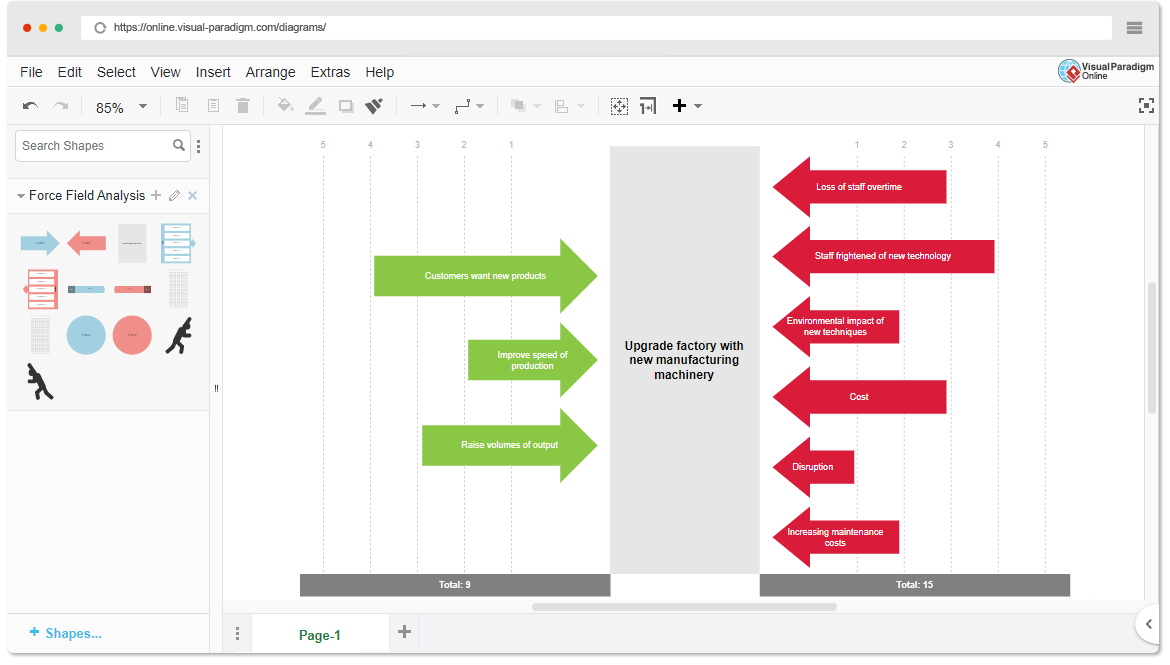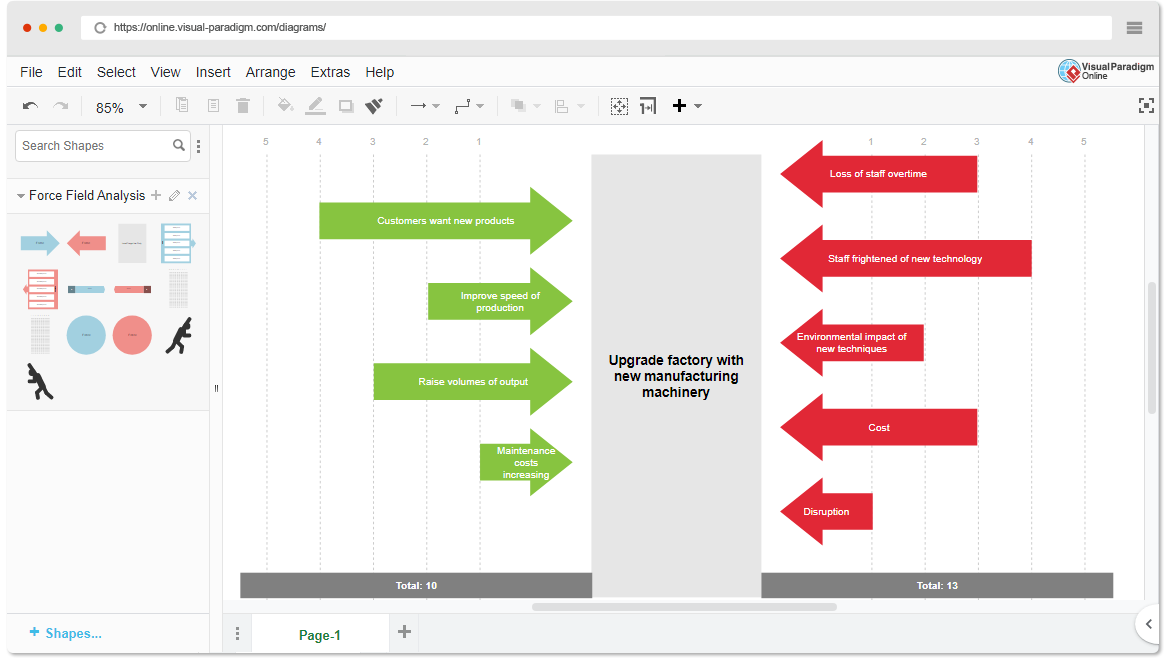Introduction
Force Field Analysis is a strategic tool developed by Kurt Lewin, used to identify and analyze the forces that can influence a change within an organization. By categorizing these forces into “driving” and “restraining” factors, organizations can better understand the dynamics at play and develop strategies to achieve desired outcomes.
Understanding the Basics
Driving Forces
These are factors that push an organization toward change. They can include:
- Market Demand: Changes in customer preferences or market conditions.
- Technological Advancements: New technologies that create opportunities for innovation.
- Regulatory Changes: New laws or regulations that necessitate changes in operations.
Restraining Forces
These are factors that hinder or resist change. They can include:
- Employee Resistance: Fear of job loss or change in roles.
- Organizational Culture: Established norms that resist new practices.
- Resource Limitations: Constraints in budget, time, or personnel.
Step-by-Step Guide to Conducting Force Field Analysis
Step 1: Define the Change
Clearly articulate the change you wish to implement. This could involve anything from adopting a new technology to restructuring the organization.
Step 2: Identify Driving Forces
Gather a team and brainstorm the positive forces that will support the change. Consider aspects like:
- Market trends
- Potential benefits
- Support from leadership
Step 3: Identify Restraining Forces
Next, identify the factors that could oppose the change. Engage with various stakeholders to understand their concerns. Areas to explore include:
- Employee apprehension
- Financial constraints
- Possible disruptions to workflow
Step 4: Analyze the Forces
Create a visual representation, typically a two-column table, listing driving forces on one side and restraining forces on the other. Rate each force on its strength (e.g., 1-5). This helps in understanding which forces are most impactful.
Step 5: Develop Strategies
Based on your analysis, brainstorm strategies to enhance driving forces and mitigate restraining forces. Consider:
- Training programs to alleviate employee fears
- Communication plans to explain the benefits of change
- Resource allocation to address financial concerns
Step 6: Implement and Monitor
Execute your strategy while continuously monitoring the forces at play. Be prepared to adjust your approach based on feedback and changing circumstances.
Tips and Tricks
- Involve Stakeholders: Engage employees and other stakeholders early in the process to foster buy-in and gather diverse perspectives.
- Use Visuals: Creating charts or diagrams can help in illustrating the forces and their impacts clearly.
- Regular Feedback: Establish a feedback loop to assess the effectiveness of your strategies and make adjustments as necessary.
- Stay Flexible: Be prepared to adapt your strategies as new driving or restraining forces emerge.
Examples of Force Field Analysis
Example 1: Implementing a New Software System
- Driving Forces: Increased efficiency, better data management, stakeholder support.
- Restraining Forces: Employee training needs, resistance to change, potential downtime.
Example 2: Expanding Product Lines
- Driving Forces: Market demand, potential for increased revenue, competitor analysis.
- Restraining Forces: Limited resources, risk of overextension, supply chain issues.
The following Chart you described appears to represent a Force Field Analysis diagram focused on upgrading a factory with new manufacturing machinery.

Purpose of the Diagram
The purpose of this diagram is to visually represent the driving and restraining forces related to the proposed change of upgrading manufacturing equipment. This helps stakeholders understand the dynamics at play and make informed decisions regarding the change process.
Driving Forces (Green Arrows)
- Customers Want New Products: Indicates a market demand for innovation, driving the need for new machinery.
- Increase Speed of Production: Suggests that upgrading machinery can enhance efficiency, allowing the factory to meet demand more effectively.
- Raise Volumes of Output: Points to the potential for increased production capacity, leading to higher revenue.
Restraining Forces (Red Arrows)
- Loss of Staff Overtime: Implies that upgrading may reduce the need for overtime work, causing concern among employees who rely on these hours for income.
- Staff Frightened of New Technology: Reflects anxiety or resistance from employees regarding their ability to adapt to new machinery.
- Environmental Impact of New Techniques: Highlights potential concerns about the ecological consequences of new manufacturing processes.
- Cost: Represents financial concerns related to the investment required for new machinery.
- Disruption: Indicates the potential operational disruptions during the transition to new equipment.
- Increasing Maintenance Costs: Suggests that new machinery may require higher maintenance expenses, adding to the financial burden and complicating budgeting.
Overall Interpretation
The updated diagram emphasizes the complexity of upgrading manufacturing machinery. While there are clear benefits related to customer demands and production efficiency, the additional concern of increasing maintenance costs further complicates the decision-making process. This factor, along with the other restraining forces, highlights the importance of comprehensive planning and stakeholder engagement to address fears and financial implications. By proactively managing these challenges, the organization can better position itself for a successful transition to new technology.
Conclusion
Force Field Analysis is a powerful tool for organizations seeking to implement change effectively. By understanding and analyzing the forces at play, leaders can make informed decisions that enhance the likelihood of successful outcomes. By following the outlined steps and utilizing the tips provided, organizations can navigate the complexities of change with greater confidence and clarity.
